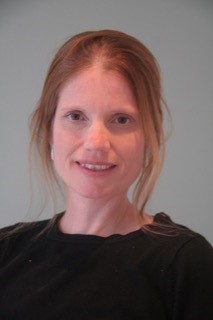World Book Day Profile: Children’s author, Christy Kirkpatrick
Children’s author Christy Kirkpatrick (BA Philosophy and Literature, 1995) has worked with a number of publishers, including BBC Worldwide, Ladybird and Flying Eye Books. We chatted with her on World Book Day about her career, her advice to budding authors and her co-authored book, The Sleepy Pebble and Other Stories: Calming Tales to Read at Bedtime, that uses relaxation techniques to help children at bedtime.
What did you study at Warwick and what attracted you to the course?
I liked the fact that my degree was interdisciplinary, with modules on areas such as the philosophy of language and aesthetics, which I found so interesting. The course was just as good as I hoped it would be.
What does World Book Day mean to you?
With three children, World Book Day means sourcing or creating various outfits for them. I love the morning of World Book Day when troops of children are making their way to school, dressed as all sorts of characters from books. My children and I really like trying to work out which characters everyone is dressed as.
What’s the role of children’s books in the modern world? Have you noticed a change over the past two years?
Children’s books have many different roles to play. Fiction allows children to escape into a world in their heads, which has been very helpful over the past two years. Non-fiction helps children discover topics they’re interested in and learn about other people’s lives, which can help them to reflect on their own lives and what they might want to become when they’re older. Then there are books that help children learn to read or pursue a hobby or, in the case of The Sleepy Pebble, relax at bedtime. Over the past two years I’ve noticed an increase in books aiming to help empower children, like Marcus Rashford’s You Are a Champion encouraging children to believe in themselves.
What did you learn in your studies at Warwick that you still use today?
I learnt to write for a specific audience and purpose. I now write largely for children so the audience is, of course, very different, but the principle of being clear in my mind about what I’m writing and who will be reading it remains the same.
What inspired you to work on this book?
The idea for The Sleepy Pebble came from my co-author, Professor Alice Gregory. Alice is Professor of Psychology at Goldsmiths, University of London, and she told me about emerging research to suggest that children could benefit from the same relaxation techniques as adults. Her idea was to embed some of those scientifically grounded techniques into a calming, beautifully illustrated book to help children relax at bedtime, and she asked if I wanted to write the book with her. I was on board straight away.
My younger son was finding it difficult to relax at bedtime and I loved the idea of co-writing a book that would help my own family, along with others. The Sleepy Pebble was published in 2019. The book contains five stories to help children aged between three and 11 years old to relax at bedtime.
Each story contains relaxation techniques including mindfulness, and the book also offers tips about how to make bedtime more relaxing, and a question-and-answer section. It’s been wonderful to hear parents tell us that The Sleepy Pebble has become their go-to book when their children need a little help winding down at bedtime. I use the book with my own children too, and love looking at the calming illustrations – although there have been times when I’ve found myself falling asleep too!
What was your favourite children’s book when you were growing up and why?
I loved Shirley Hughes’ books. She’s always been so good at capturing the small but important moments in children’s lives, whether that’s being nervous about going to a party or getting excited about an up-coming birthday. When I was a bit older, I was captivated by Roald Dahl’s The Witches. I think it was the setting that particularly appealed to me; the idea of a group of witches attending a conference in the sort of hotel I sometimes stayed at myself really tickled my childhood self.
Do you have any advice for aspiring authors and illustrators?
Write or illustrate regularly. It’s a good idea to write about, or to illustrate, what interests you, but it’s helpful to be open to new opportunities too. In my first job in publishing, I spent a lot of time writing blurbs for the back of books, which I now see was a great way of learning how to write to a brief.
What’s next for you?
I write for a number of different publishers and will continue to do so. A lot of my work is writing learn-to-read books, which I love doing and take a great deal of care over. Learn-to-read books will be among the first books that children will read by themselves, so I feel a responsibility to make sure the books are appealing and engaging. When I was learning to read, my favourite book was one of Ladybird’s Peter and Jane books, because it had a picture of jar of delicious-looking red sweets on one of its pages. The illustrator did a very good job of making the book appealing to children; I still remember those red sweets vividly!

